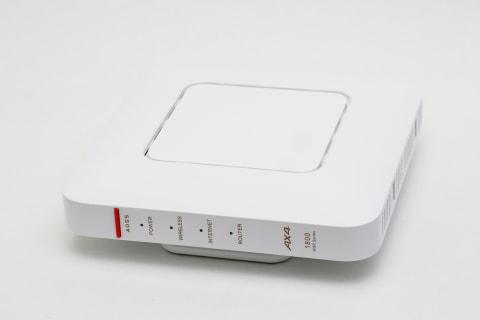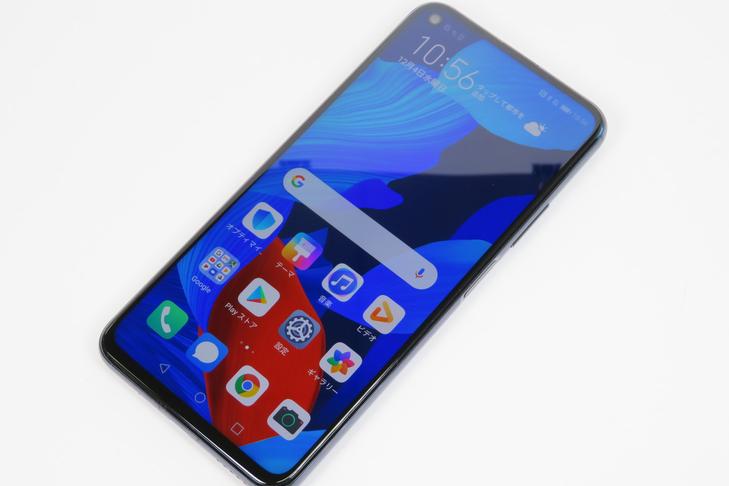Introduced an inexpensive wireless LAN router compatible with Wi-Fi 6, the merit is stability in a remote place
It's been a long time since the evolution of wireless LAN has slowed down. In the past, when IEEE 802.11g and 11n appeared, new standards were announced one after another, and we had to consider them before they were released, and when a good model came out, we decided to purchase it immediately. However, now I'm not so troubled with the speed of wireless LAN as I rush to Wi-Fi 6 (IEEE 802.11ax). What's more, the author, who is a fixed group who wants to use a wired LAN if he can do it, did not intend to hurry to introduce the latest wireless LAN standard.
And the problem is that I didn't have a Wi-Fi 6 compatible computer or smartphone at hand. Even if only the master unit supports it, it is meaningless if the slave unit does not support it. It was only recently that the second-generation iPhone SE, the Wi-Fi 6-enabled device for me, came to hand.
Many Wi-Fi 6 compatible wireless LAN routers have already appeared, and the face of device makers has changed from the past. TP-Link, Huawei, Buffalo, and IO Data Devices are offering under 10,000 yen, of which Buffalo is the cheapest device that supports WPA3 with new security, and somehow it is familiar. I decided on WSR-1800AX4.
Wi-Fi 6 has various speeds, and the speed of the 5GHz band is 1201Mbps for low-end models, which is the same for this WSR-1800AX4. The purchase price is about 7,000 yen, and the cheapest product is TP-link's AX10, but this Wi-Fi 6 is only compatible with the 5GHz band, and it is not compatible with WPA3.
Also, if you add a little budget, there are models with a speed of 2402 Mbps in the 5 GHz band, but if you have multiple Wi-Fi 6 compatible handsets, you may choose. However, if you add a little more budget and choose a model with 4804 Mbps in the 5 GHz band, the number of streams will increase, and even in an environment with many conventional Wi-Fi 5 devices, the speed reduction will be suppressed, which is advantageous. The author was also at a loss and was wondering whether to use the Buffalo WSR-5400AX6, which had just appeared among the 4-stream models.
By changing the stand that can be placed horizontally, the input / output that can be placed vertically or horizontally is basically only the LAN cable. There is no USB portAnd although it is a new standard that tends to focus only on speed, it also has the advantage of renewing the technology and performance of the wireless part. Especially in the case of smartphones, even if the speed test gives a number close to giga bps, there is no useful content, and even when downloading the application, I have never seen data drop at such a speed. If so, it is more advantageous to increase the stability at a remote location.
There is also a physical switch power button for mode switching, but it is also equipped with Buffalo's original AOSS button that operates the software from the position of the switch instead of physically turning off the power.
I tried arranging excuses for purchasing low-end models, but I finally want to actually use it.
As for the optical line I tried, I was forced to use the router attached to the line, and I could not use my own router. Therefore, I tried it in the access point connection mode.
The speed of several hundred Mbps can be easily obtained on the downlink, but this is the same for Wi-Fi 5 as well as the explosive speed on the uplink.The first thing I tried was the close range of WSR-1800AX4, which was measured by the speed measurement app SPEEDTEST at 344Mps for downlink and 605Mbps for uplink. However, with the conventional Wi-Fi 5 (IEEE 802.11ac) wireless LAN router with a maximum of 867 Mbps, the downlink speed is 423 Mbps and the uplink is 517 Mbps, which is inferior to Wi-Fi 5.
I was once disappointed that there was no point in using the latest Wi-Fi 6, but when I moved away from one or two walls, the speed difference changed, and when I was about three walls away, Wi-Fi. -Fi 6's WSR-1800AX4 has a downlink speed of 220 Mbps and an uplink speed of 124 Mbps, which does not slow down so much, but the conventional Wi-Fi 5 has a downlink speed of 60.9 Mbps and an uplink speed of 56.7 Mbps.
In other words, the merit of WSR-1800AX4 was that the speed and stability at a remote location increased. Considering the actual usage scene, it doesn't make much sense to have fast communication at close range, but rather it's nice to be able to use it stably anywhere in the house.
When using Wi-Fi 6 at close range, downlink is 344 Mps, uplink is 605 Mbps Even with conventional Wi-Fi 5, if it is close range, downlink 423 Mbps and uplink 517 Mbps are measured, which exceeds Wi-Fi 6.On the other hand, the performance of WPA3, which I was worried about, has resulted in slower speed than normal WPA2. After all, the security process is heavy, and it seems that a bottleneck has occurred due to the burden on the base unit side of the wireless LAN, the smartphone side, or both. For the time being, eliminating this bottleneck may be the key to the spread of WPA3.
When measured at a distance of about 3 walls, the speed does not change much with Wi-Fi 6 If you sandwich 3 walls, Wi-Fi 5 will drop significantly. I feel like I've seen the true value of Wi-fi 6The WSR-1800AX4 may not have been enough to increase the maximum speed of the wireless section, but the benefits of Wi-Fi 6 are sufficient in terms of stability and speed increase at a remote location.
At the moment, Wi-Fi 6 support on Android smartphones is limited to high-end models in the high-end, but iPhone can be used on the second generation iPhone SE. If you replace your laptop with the latest performance-oriented model, it seems to be compatible with Wi-Fi 6, so I'm glad I bought a wireless LAN router that supports Wi-Fi 6.
| product name | Selling agency | Purchase price |
|---|---|---|
| AirStation WSR-1800AX4 / DWH | Buffalo | 6980 yen |






![[July 6 and 7] DX realized by content cloud, advanced platform for business transformation](https://website-google-hk.oss-cn-hongkong.aliyuncs.com/drawing/article_results_9/2022/3/9/6bbafe438d78271513761788166cbf94_0.jpeg)

